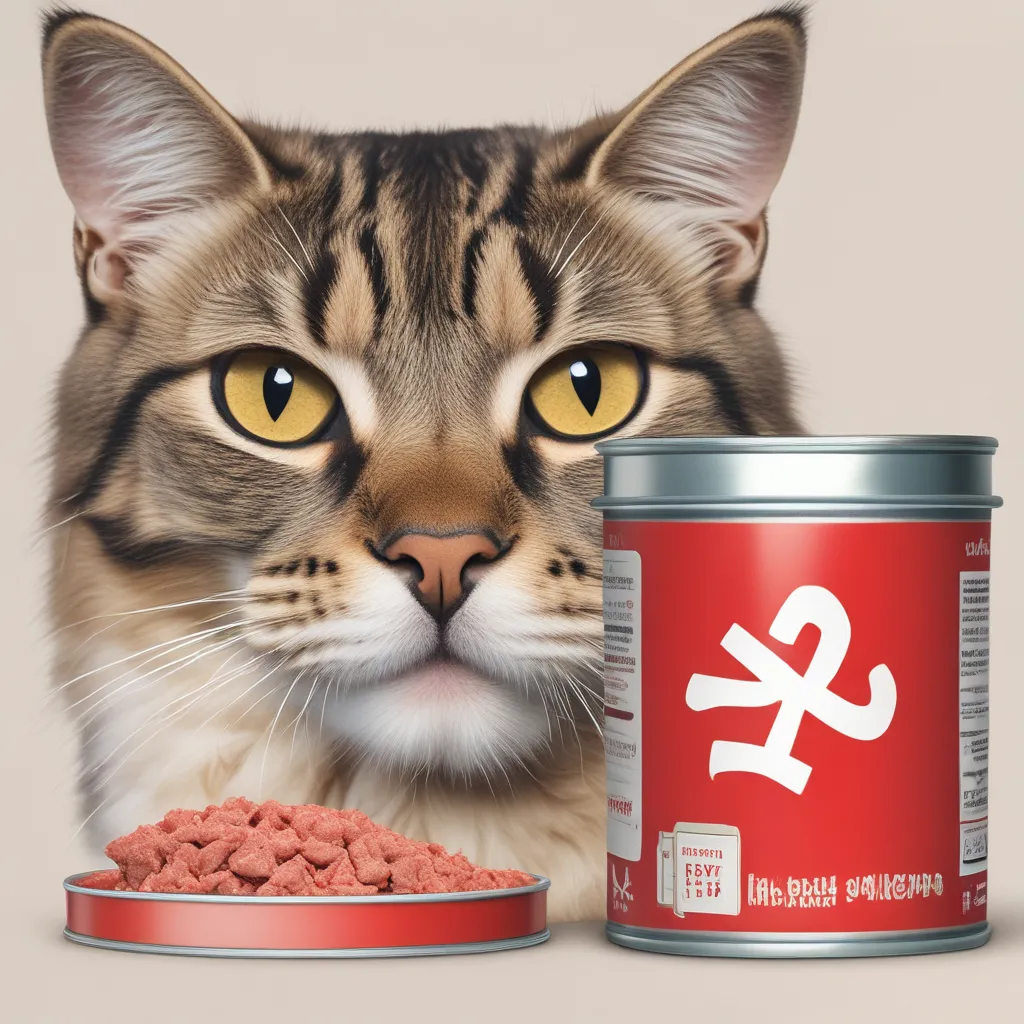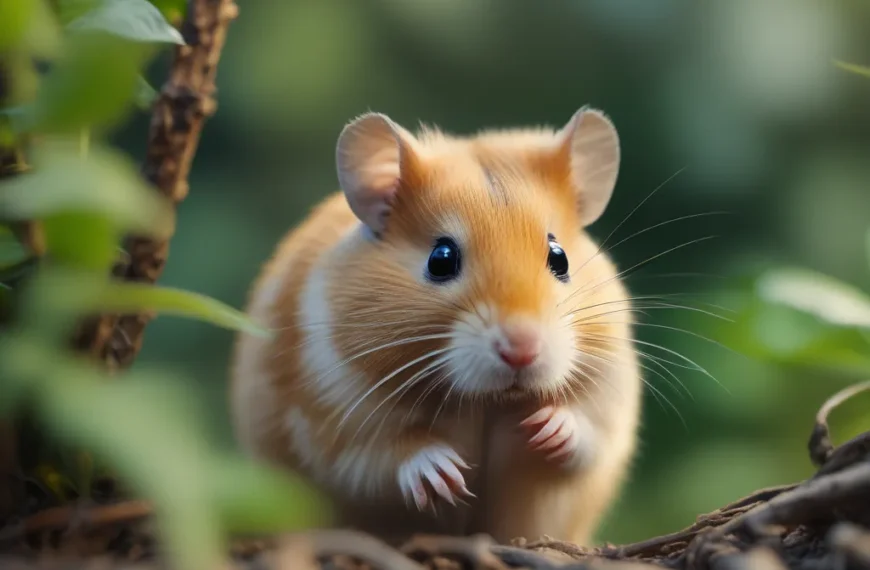Introduction
As a responsible cat owner, it’s essential to understand the importance of choosing the right ingredients for your cat’s food. The food your cat eats can significantly impact their overall health and well-being. With so many cat food options available, it can be overwhelming to decide what to feed your feline friend. However, some ingredients can be detrimental to your cat’s health, and it’s crucial to avoid them.
In this article, we will explore the common ingredients to avoid in cat food, including toxic vegetables and herbs, artificial flavors and colors, and more. We will also discuss the risks associated with these ingredients and provide guidance on how to identify harmful ingredients in your cat’s food.
By the end of this article, you will have a better understanding of what ingredients to avoid in cat food and how to make informed decisions about your cat’s diet.
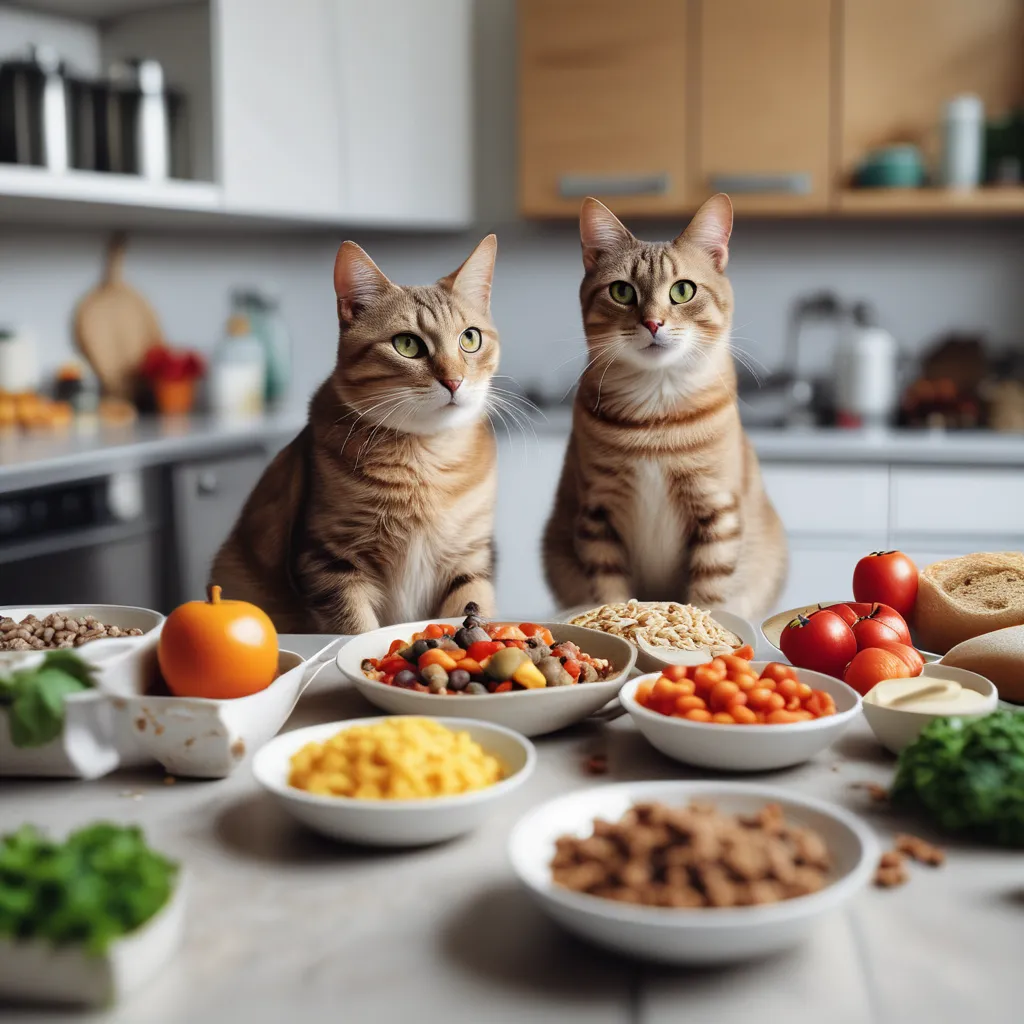
Common Ingredients to Avoid in Cat Food
As a responsible cat owner, it’s essential to be aware of the ingredients in your cat’s food that can be detrimental to their health. While it’s impossible to cover every single ingredient, there are some common ones that you should avoid at all costs.
1. Onions and Garlic
Onions and garlic belong to the Allium family and contain a compound that can cause damage to a cat’s red blood cells, leading to anemia. Even small amounts can be toxic, so it’s best to avoid them altogether.
2. Grapes and Raisins
Grapes and raisins have been known to cause kidney failure in cats, and it’s best to avoid them altogether. The exact mechanism of toxicity is still unknown, but it’s better to err on the side of caution.
3. Chocolate
Chocolate contains a compound called theobromine, which can be toxic to cats. The darker the chocolate, the more toxic it is. Keep all chocolate products out of reach of your feline friends.
4. Caffeine
Like chocolate, caffeine is also toxic to cats. It can cause symptoms such as vomiting, diarrhea, and increased heart rate. Keep all caffeinated products, including coffee, tea, and energy drinks, out of reach.
5. Raw or Undercooked Meat, Eggs, and Fish
Raw or undercooked meat, eggs, and fish can contain bacteria such as Salmonella and E. coli, which can be deadly to cats. Make sure to cook all meat, eggs, and fish thoroughly before feeding them to your cat.
6. Milk and Dairy Products
Most cats are lactose intolerant, meaning they don’t have the enzyme to digest lactose, a sugar found in milk. Feeding your cat milk or dairy products can lead to digestive issues such as diarrhea and vomiting.
7. Bread Dough
Bread dough can expand in a cat’s stomach, causing it to rupture. It’s also a choking hazard, so keep all bread dough out of reach.
8. Xylitol
Xylitol is a sugar substitute commonly used in sugar-free gum, candy, and baked goods. It can cause a rapid drop in blood sugar and even liver failure in cats.
9. Macadamia Nuts
Macadamia nuts can cause weakness, depression, vomiting, tremors, and hyperthermia in cats. It’s best to avoid them altogether.
10. Avocado
While avocados are not toxic to cats, the pit, skin, and leaves can cause problems. The pit can get stuck in the digestive tract, while the skin and leaves can cause vomiting and diarrhea.
By avoiding these common ingredients, you can help keep your cat safe and healthy. Always read the labels and consult with your veterinarian if you have any concerns.

Toxic Vegetables and Herbs in Cat Food
As a responsible cat owner, it’s essential to be aware of the potential dangers that certain vegetables and herbs can pose to your feline friend. While some vegetables and herbs are safe for cats to consume, others can be toxic and even life-threatening.
Common Toxic Vegetables and Herbs in Cat Food
Some common vegetables and herbs that are toxic to cats include:
- Onions and Garlic: These belong to the Allium family and contain a compound that can damage a cat’s red blood cells, leading to anemia.
- Chives: Like onions and garlic, chives also belong to the Allium family and can cause similar health issues in cats.
- Leeks: Leeks are another member of the Allium family and can be toxic to cats if consumed in large amounts.
- Grapes and Raisins: While not typically thought of as a vegetable or herb, grapes and raisins have been known to cause kidney failure in cats.
- Mushrooms: Some mushrooms, such as the Amanita species, can be toxic to cats and cause a range of symptoms, including vomiting, diarrhea, and abdominal pain.
- Tomato Leaves and Stems: While tomatoes themselves are not toxic to cats, the leaves and stems contain a compound called solanine, which can be toxic if ingested.
Risks of Toxic Vegetables and Herbs in Cat Food
If your cat ingests toxic vegetables or herbs, it can lead to a range of health issues, including:
- Gastrointestinal upset
- Vomiting and diarrhea
- Abdominal pain
- Anemia
- Kidney failure
- Even death in severe cases
How to Keep Your Cat Safe
To keep your cat safe from toxic vegetables and herbs, it’s essential to:
- Always check the ingredient list of your cat’s food to ensure it doesn’t contain any toxic vegetables or herbs.
- Keep toxic vegetables and herbs out of reach of your cat.
- Avoid feeding your cat table scraps or human food that may contain toxic vegetables or herbs.
- Consult with your veterinarian if you suspect your cat has ingested a toxic vegetable or herb.

By being aware of the potential dangers of toxic vegetables and herbs in cat food, you can help keep your feline friend safe and healthy.
Risks of Artificial Flavors and Colors in Cat Food
Artificial flavors and colors in cat food can pose significant risks to your cat’s health. As an obligate carnivore, cats prefer the flavor of meat over grains, but pet food manufacturers often use tricks to make plant-based foods taste more like meat. One such trick is the use of artificial flavors, which can be detrimental to your cat’s health.
Artificial Flavors
Artificial flavors can lead to health problems in cats, including obesity and other issues. Some cats may become more hyperactive or agitated due to the presence of certain additives. Additionally, artificial flavors can affect a cat’s behavior and temperament.
Artificial Colors
Artificial colors in cat food can also pose health risks. Some preservatives used in cat food, such as BHA (butylated hydroxyanisole) and BHT (butylated hydroxytoluene), have raised concerns about potential long-term health effects. These preservatives can lead to health problems, including cancer and liver damage.
Risks to Your Cat’s Health
The risks associated with artificial flavors and colors in cat food are significant. Some of the potential health problems include:
- Obesity and weight gain
- Hyperactivity and agitation
- Changes in behavior and temperament
- Cancer and liver damage
- Other health issues
What You Can Do
To protect your cat’s health, it’s essential to choose a high-quality cat food that is free from artificial flavors and colors. Look for cat food that uses natural ingredients and avoids the use of preservatives like BHA and BHT.

By choosing a healthy cat food, you can help reduce the risks associated with artificial flavors and colors and keep your cat happy and healthy.
Why Fats, Oils, and Plant Oils Should be Avoided in Cat Food
As a responsible cat owner, it’s essential to understand the importance of providing your feline friend with a balanced and nutritious diet. However, some ingredients can be detrimental to your cat’s health, and fats, oils, and plant oils are among them.
The Risks of Fats and Oils in Cat Food
Fats and oils are often added to cat food as a source of energy and to enhance palatability. However, many commercial cat foods contain high amounts of unhealthy fats and oils, which can lead to various health problems in cats.
- Obesity and Weight Gain: Consuming high amounts of fat can cause weight gain and obesity in cats, which increases the risk of developing diabetes, arthritis, and other health issues.
- Pancreatitis: Fats and oils can trigger pancreatitis, a painful and potentially life-threatening condition in cats.
- Inflammatory Diseases: Some fats and oils, such as omega-6 fatty acids, can promote inflammation in the body, leading to conditions like arthritis, skin problems, and allergies.
The Dangers of Plant Oils in Cat Food
Plant oils, such as soybean oil, corn oil, and canola oil, are commonly used in cat food. However, these oils can be detrimental to your cat’s health.
- Lack of Bioavailability: Plant oils are not easily absorbed by cats, which can lead to malabsorption of essential nutrients.
- Inflammatory Effects: Plant oils can cause inflammation in the body, leading to various health problems.
- Allergic Reactions: Some cats may develop allergic reactions to plant oils, which can manifest as skin problems, digestive issues, or respiratory problems.
Choosing the Right Fats and Oils for Your Cat
While it’s essential to avoid unhealthy fats and oils in cat food, some fats and oils are beneficial for your cat’s health.
- Omega-3 Fatty Acids: Omega-3 fatty acids, particularly EPA and DHA, are essential for your cat’s skin, coat, and joint health.
- Animal-Derived Fats: Fats derived from animal sources, such as chicken fat or salmon oil, are more easily absorbed by cats and provide essential nutrients.
In conclusion, it’s crucial to avoid unhealthy fats, oils, and plant oils in your cat’s food to prevent various health problems. Instead, opt for high-quality cat food that contains beneficial fats and oils, such as omega-3 fatty acids and animal-derived fats. Always consult with your veterinarian to determine the best diet for your feline friend.
The Dangers of Xylitol and Excessive Salt in Cat Food
As a responsible cat owner, it’s essential to be aware of the potential dangers that certain ingredients in your cat’s food can pose. Two such ingredients that can be particularly hazardous to your feline friend’s health are xylitol and excessive salt.
What is Xylitol?
Xylitol is a sugar substitute commonly used in human foods, such as sugar-free gum, candy, and baked goods. However, it’s highly toxic to cats, even in small amounts. When ingested, xylitol can cause a rapid release of insulin, leading to a severe drop in blood sugar levels. This can result in symptoms such as vomiting, lethargy, and seizures, and if left untreated, can be fatal.
The Risks of Excessive Salt in Cat Food
While cats require some salt in their diet, excessive amounts can be detrimental to their health. Consuming high amounts of salt can lead to dehydration, electrolyte imbalances, and even kidney damage. Cats are particularly sensitive to salt, and their kidneys are not equipped to handle excessive amounts.
Why are Xylitol and Excessive Salt in Cat Food?
Xylitol and excessive salt can find their way into cat food through various means. Some cat food manufacturers may use xylitol as a sugar substitute or to enhance flavor. Excessive salt can be added to cat food as a preservative or to enhance flavor.
How to Protect Your Cat
To keep your cat safe from the dangers of xylitol and excessive salt, follow these tips:
- Always read the ingredient label carefully before purchasing cat food.
- Avoid giving your cat human food, especially sugar-free gum, candy, or baked goods.
- Choose cat food that is low in salt and made with natural ingredients.
- Consult with your veterinarian to determine the best diet for your cat.
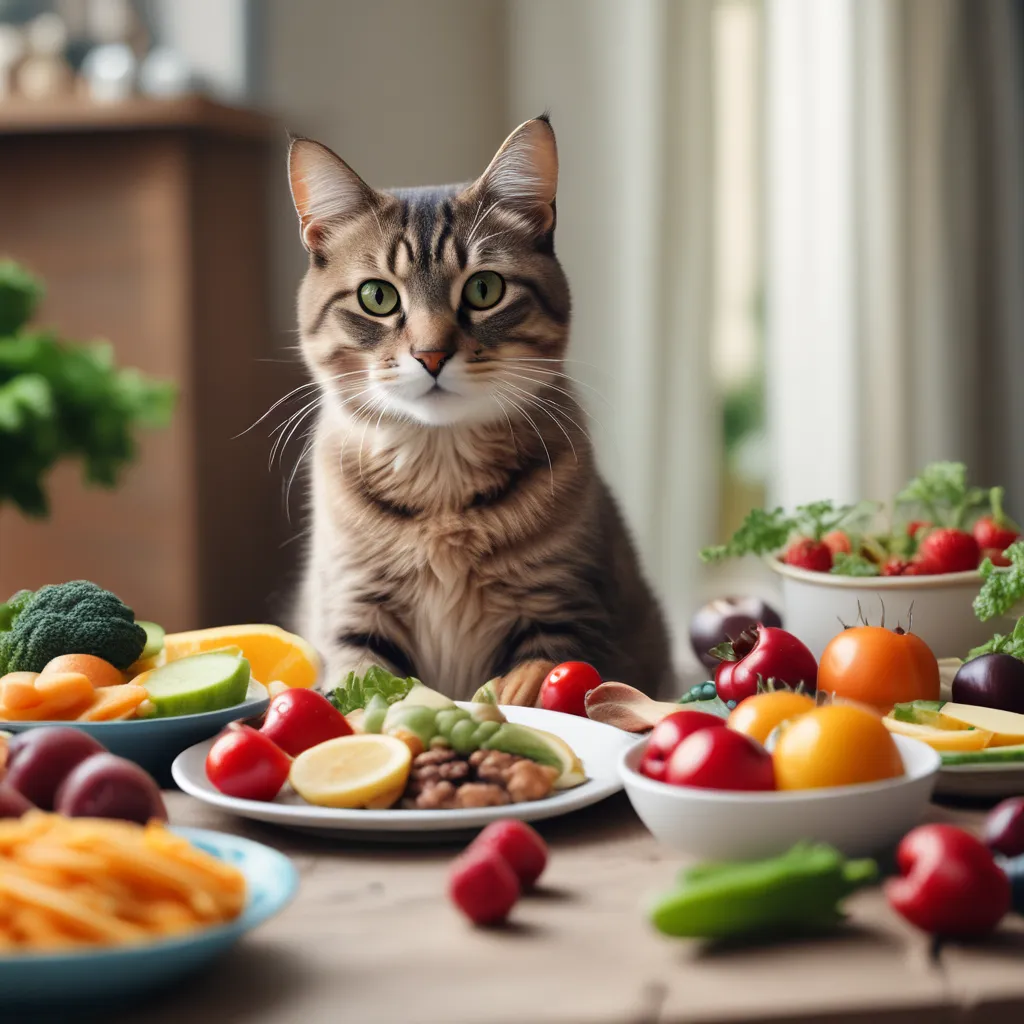
By being aware of the potential dangers of xylitol and excessive salt in cat food, you can take steps to protect your feline friend’s health and well-being.
How to Identify Harmful Ingredients in Your Cat’s Food
As a responsible cat owner, it’s essential to ensure that your feline friend is eating a balanced and nutritious diet. However, with so many cat food options available, it can be challenging to identify which ingredients are safe and which ones to avoid. In this section, we’ll provide you with a comprehensive guide on how to identify harmful ingredients in your cat’s food.
Read the Label Carefully
The first step in identifying harmful ingredients in your cat’s food is to read the label carefully. Look for the ingredient list and check if it contains any of the common ingredients to avoid in cat food, such as:
- Artificial preservatives like BHA, BHT, and ethoxyquin
- Artificial colors like Red 40, Yellow 5, and Blue 2
- Fillers like corn, wheat, and soy
- By-products and meat by-products
Check for Toxic Vegetables and Herbs
Some vegetables and herbs can be toxic to cats, so it’s essential to check the ingredient list for any of the following:
- Onions and garlic
- Chives and leeks
- Grapes and raisins
- Macadamia nuts
- Xylitol
Be Aware of Risks of Artificial Flavors and Colors
Artificial flavors and colors can be detrimental to your cat’s health, so it’s crucial to avoid them. Look for natural flavorings and colors instead.
Watch Out for Fats, Oils, and Plant Oils
While some fats and oils are essential for your cat’s health, others can be harmful. Be cautious of:
- Partially hydrogenated oils
- Palm oil
- Coconut oil
The Dangers of Xylitol and Excessive Salt
Xylitol and excessive salt can be toxic to cats, so it’s essential to avoid them altogether.
How to Identify Harmful Ingredients
To identify harmful ingredients in your cat’s food, follow these steps:
- Read the label carefully and look for common ingredients to avoid.
- Check for toxic vegetables and herbs.
- Be aware of the risks of artificial flavors and colors.
- Watch out for harmful fats, oils, and plant oils.
- Avoid xylitol and excessive salt.
By following these steps, you can ensure that your cat is eating a safe and nutritious diet.
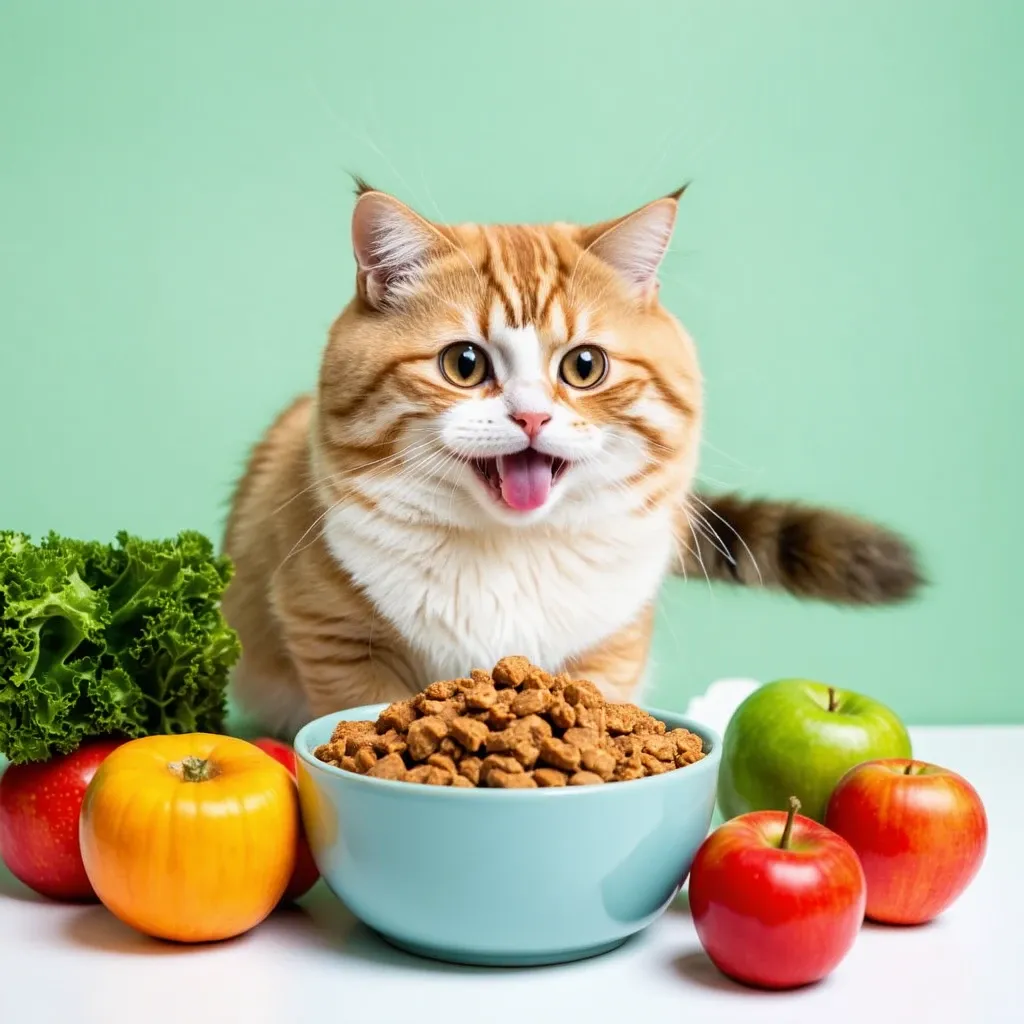
Conclusion
As a responsible cat owner, it’s essential to be aware of the ingredients in your cat’s food that can harm their health. By avoiding common ingredients like toxic vegetables and herbs, artificial flavors and colors, and excessive salt, you can help ensure your cat lives a long and healthy life. Additionally, being mindful of the risks associated with fats, oils, and plant oils, as well as the dangers of xylitol, can help you make informed decisions when choosing your cat’s food.
By taking the time to read labels and research the ingredients in your cat’s food, you can help protect them from the potential harm caused by these ingredients. Remember, a healthy diet is just one aspect of maintaining your cat’s overall health, but it’s a crucial one. By making informed choices, you can help your cat thrive and live a happy, healthy life.


